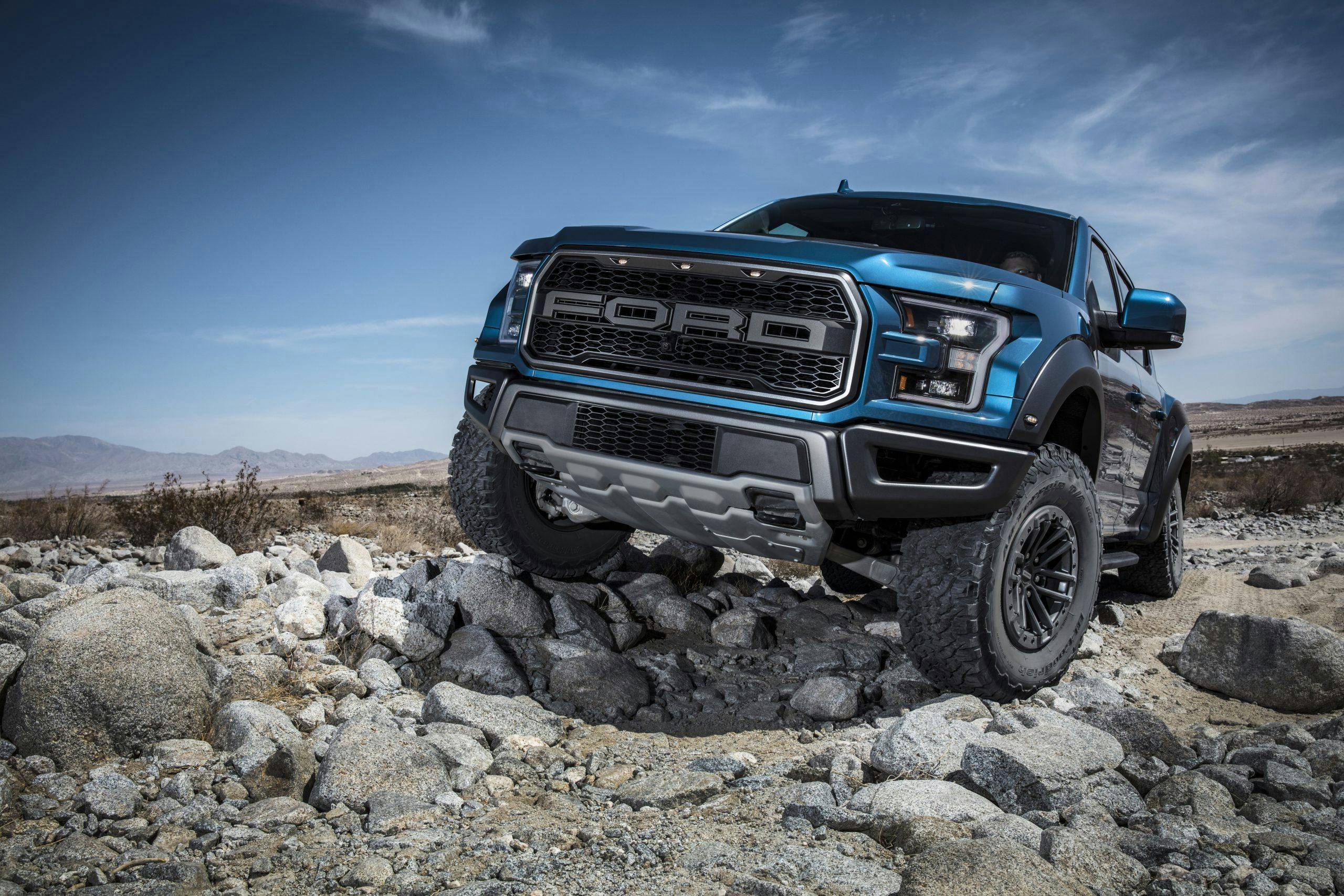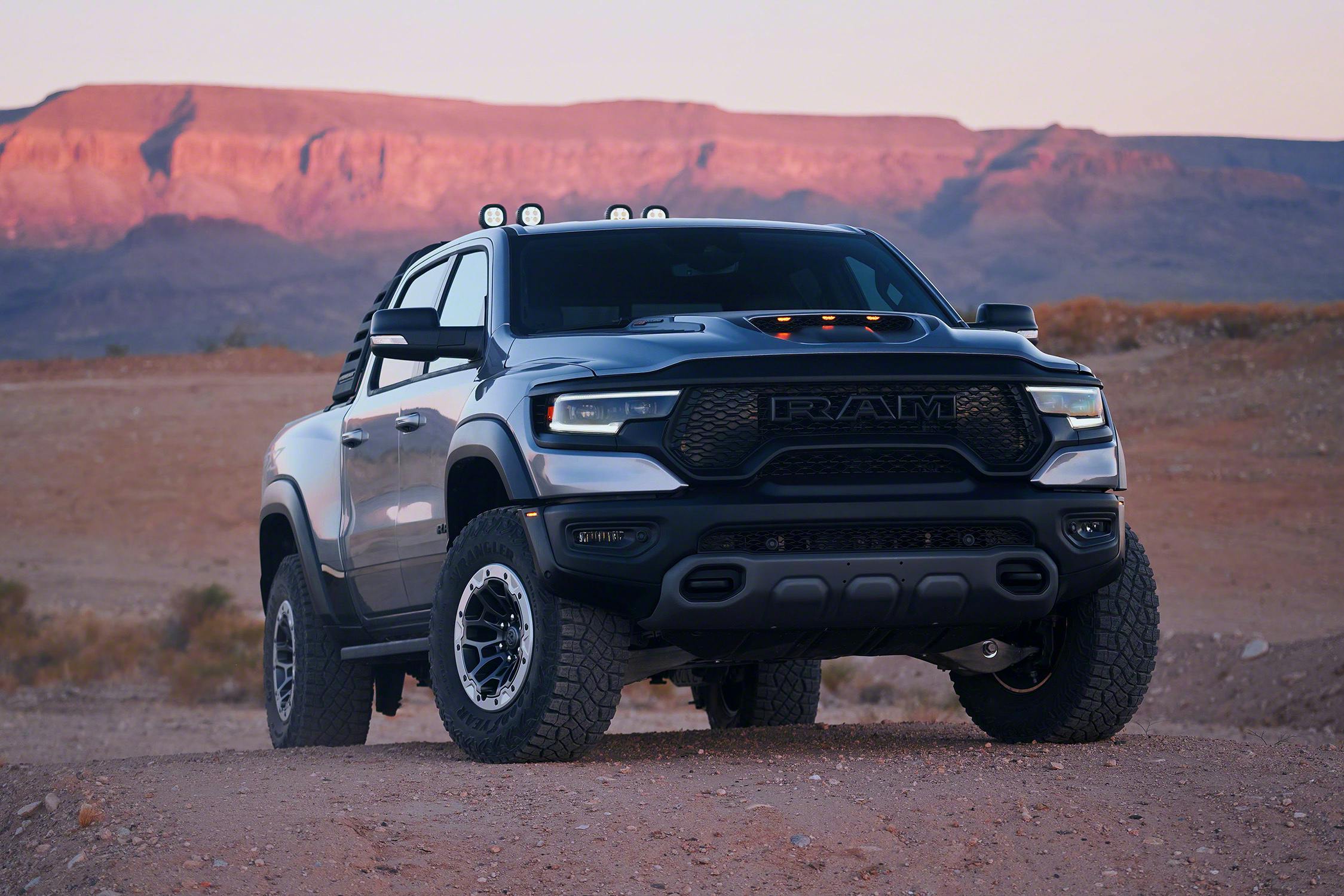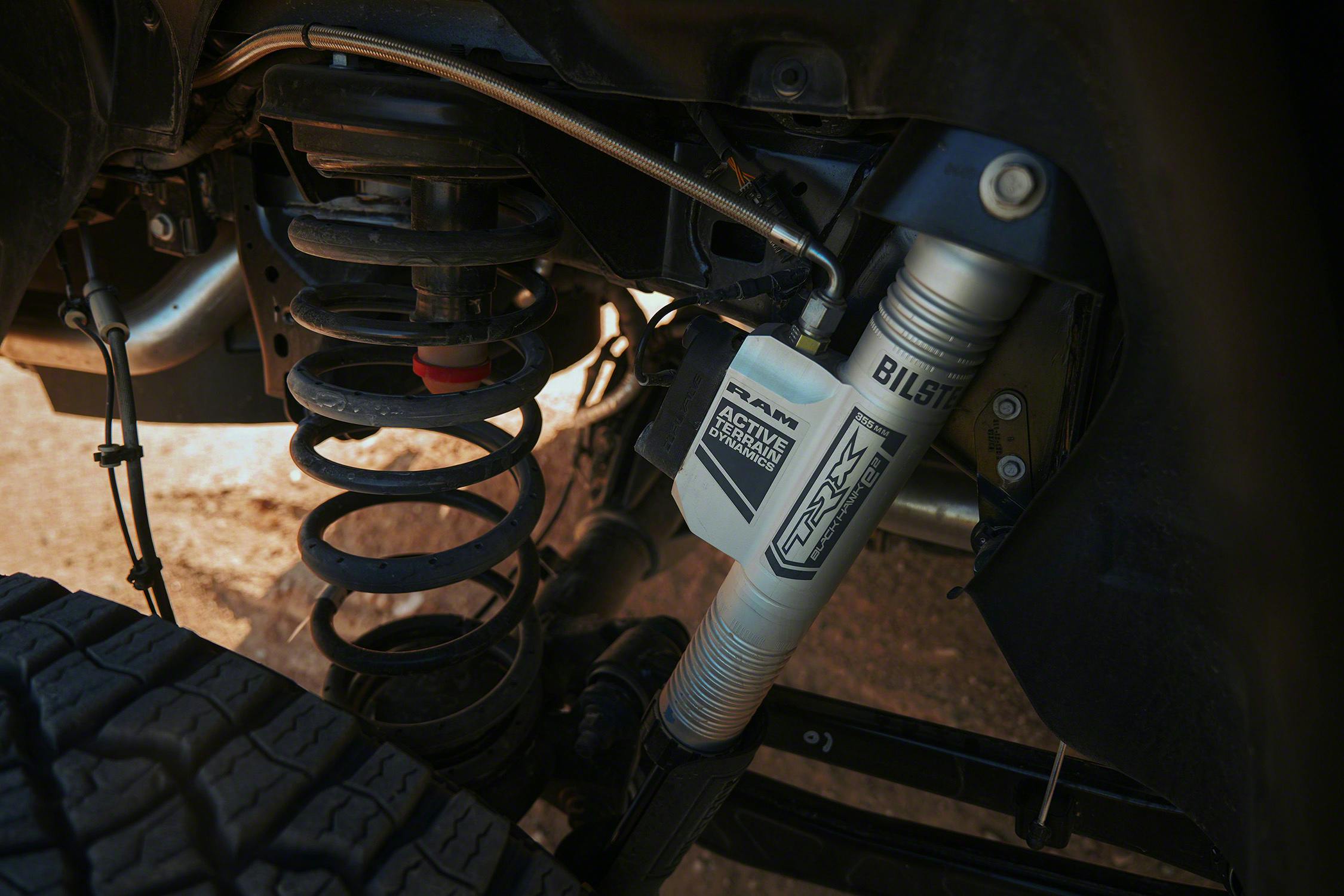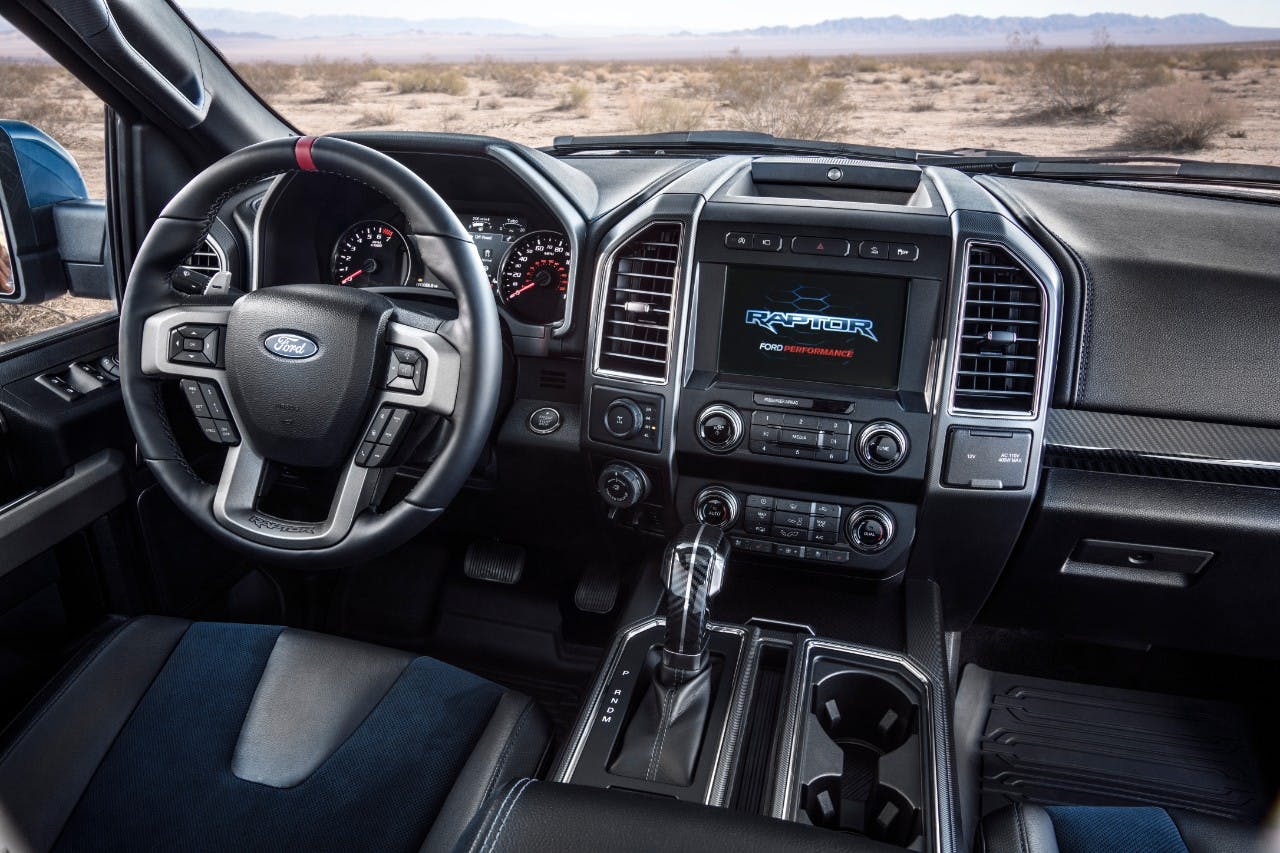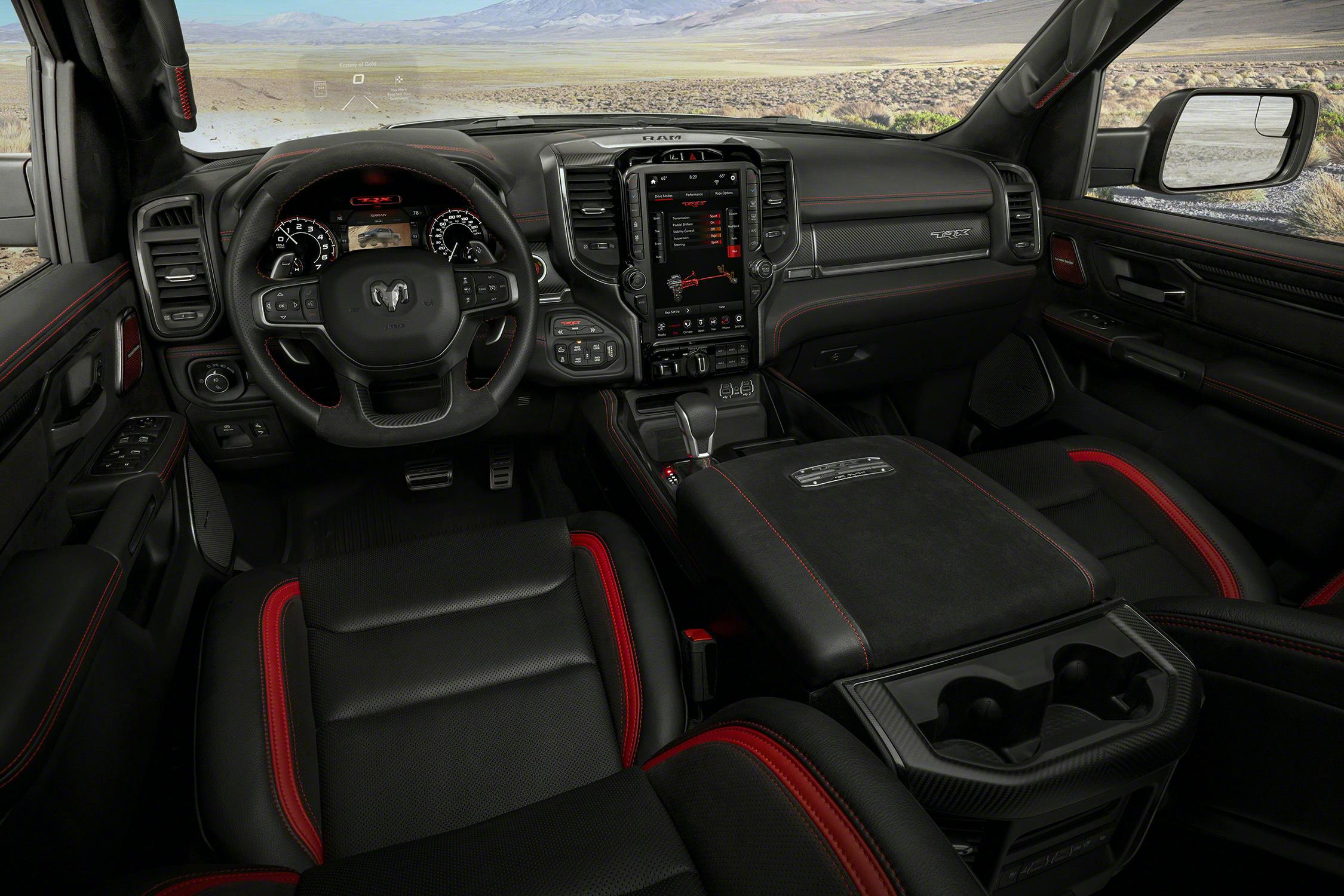Ram 1500 TRX vs. Ford F-150 Raptor: How they stack up
For years, the Ford F-150 Raptor has enjoyed a performance truck landscape free of worthy challengers. Finally, the Ram 1500 TRX seeks to change that paradigm. The supercharged, super-sized, super-Ram is here to do one thing and one thing only—spoil the Raptor’s party.
When you actually stack the two up on paper, however, where does the TRX have an advantage? In what aspect does the Raptor still command a lead? We pored over the two spec sheets to pit these super trucks against one another, at least on paper. Here’s how they measure up:
Overview
You know the Ford Raptor as the first to define this category of modern high-performance super trucks. It can jump, it can rip through desert terrain, and it doesn’t really lose much of what made it useful as a pickup in the process. Now in its second generation, the Raptor is offered in two layouts; you can get an extended-cab (Ford calls it the SuperCab) with a five-foot, six-inch bed, or opt for the full crew-cab (SuperCrew in Ford speak) with the same-size bed. The Raptor is based on the venerable F-150—the best selling pickup for some 40 years going.
The TRX, on the other hand, is brand new. We first saw it as a concept in 2016, and we’ve been clamoring for it to become a reality ever since. It’s based on the Ram 1500, one of the most impressive new trucks on sale today. Like the Raptor, the TRX is bigger, wider, and meaner than the more tame truck on which it is based. It only comes in one configuration: Crew cab with a five-foot, seven-inch bed.
The way that these beasts are transformed from mulch haulers to Baja stormers is similar, but also different in a few key ways. Let’s dive into the particulars.
Engine
The headliner for the TRX is its supercharged, 6.2-liter Hemi V-8, straight from Dodge’s Hellcat models. You’ve seen this engine at work in the Challenger and the Charger, as well as Jeep Grand Cherokee SRT Trackhawk. In the TRX, it’s good for a whopping 702 horsepower at 6100 rpm and 650 lb-ft of torque at 4800 rpm. It breathes through two heavily-filtered intakes, one through its hollowed out grill and the other from a functional ram-air hood scoop.
The Raptor, meanwhile, uses a de-tuned version of the 3.5-liter twin-turbocharged EcoBoost V-6 found in the Ford GT supercar. In the truck, this engine produces 450 horsepower at 5000 rpm, and 510 lb-ft of torque at 3500 rpm.
Crew cab pickups aren’t supposed to be this quick, right? When Car and Driver tested a 2019 SuperCrew Raptor, it clicked-off 0-60 in just 5.1 seconds, on its way to a 13.9 second quarter-mile at 99 mph. (The Raptor still has the same powertrain setup in 2020. Ford declined to provide official figures for Raptor acceleration.) The TRX, frankly, obliterates those figures; Ram claims a 4.5 seconds to 60 mph, and a quarter-mile time of 12.9 seconds at 108 mph. The Raptor’s top speed is limited to 107 mph, while the TRX can charge all the way to 118.
Although the Raptor is rumored to receive the Shelby GT500’s supercharged V-8 in the near future, there has been no official confirmation thus far from Ford. Given Ford’s commitment to the EcoBoost brand, this one could be just hopeful speculation.
Transmission and 4WD
The TRX uses a version of the ZF Torqueflite eight-speed automatic transmission, a gearbox we’ve come to know and love. This particular version, the 8HP95, is designed for high-torque applications, like, say, launch control with 650 lb-ft of torque on tap. The Raptor uses the 10-speed automatic that Ford and GM co-developed. It’s a stout, effective gearbox, but some folks don’t care for the sheer amount of gear changing that 10 cogs tend to precipitate.
Both trucks have two-speed transfer cases with identical low-range ratios of 2.64:1. Both transfer cases have variable torque-splitting capabilities front-to-rear. The TRX uses a Dana 60 solid rear axle with 3.55 gears and an electric locker. The Raptor rocks a 4.10 rear end, also with an electronic locker. The TRX offers a brake-based electronic limited-slip front differential as standard, while the Raptor makes you cough up another $500 for a Torsen unit.
Suspension
As important as raw power is in the world of super trucks, suspension is where these brutes make their hay. The TRX boasts an independent front suspension with forged aluminum upper and lower A-arms and coil springs. TRX-specific 2.5-inch Bilstein Blackhawk e2 adaptive dampers reside at each corner. Ram claims these trick shocks can handle desert blitzing runs north of 100 mph. Out back, Ram’s five-link solid rear axle setup seems poised to offer a sublime ride on and off-road, if our thousands of miles behind the wheel of a normie Ram are any indication. Ram says the TRX has 13 inches of suspension travel at all four corners.
The Raptor uses basically the same setup in the front—independent front suspension with double A-arms, coil springs, and high-tech dampers. The 3.0-inch Fox Racing continuously-variable dampers are some of the best in the business. Outback, the Raptor’s solid-axle and leaf spring setup is familiar but far from obsolete. Ford says the front suspension has 13 inches of travel, while the rear offers up to 13.9 inches.
Wheels and tires are just as vital as shocks for the terrain these trucks are intended to tackle. On the TRX, 18-inch wheels wear massive, specially-developed Goodyear Wrangler Territory All-Terrain tires that measure 325/65. The Raptor has 17-inch wheels and BF Goodrich All-Terrain T/A K02 tires measuring 315/70. Both trucks offer bead-lock capable wheels as options.
The resulting clearances from the wheels/tire combos paired with these high-tech suspensions are extremely similar. The TRX just edges the Raptor for ground clearance, with 11.8 inches vs. the Raptors 11.5. Approach angles are exactly the same, at 30.2 degrees. Breakover angles are within 0.1 degrees—21.9 for the TRX and 21.8 for the SuperCrew Raptor. (The SuperCab Raptor’s breakover is 22.9 inches.) Departure angles tell the same story: the TRX comes in at 23.5 degrees, the Raptor at 23.
Truck stuff
Occasionally, customers might want to use the TRX and Raptor as real trucks, towing and hauling to their hearts content. Ram says the TRX can tow up to 8100 pounds, while Ford rates the Raptor’s towing ability at 8000 pounds. Payload figures tell the same story as towing; the TRX’s 1310-pound rating eclipses the Raptor’s 1200-pound figure.
Ram doesn’t list an official curb weight for the TRX, but we’re pretty confident it will clear three tons. That’s a considerable amount of weight to be chucking around, but we don’t doubt that the Hellcat motor is up to the task. The SuperCrew Raptor tips the scales at 5697 pounds—not svelte by any means but a couple hundred pounds lighter than the TRX. Expect to feel that difference when cornering and braking in one versus the other, even on loose terrain.
Pricing
Aside from their engines, the most important practical difference between these two trucks is their starting prices. Ford will sell you a SuperCrew Raptor for just $58,135 including $1695 destination fee. Modestly optioned, you’re probably looking at a $64,000-ish truck. The TRX starts at $71,790, including $1695. Yes, we’re in full agreement that a supercharged 6.2-liter V-8 should command a bit more scratch versus a 3.5-liter twin-turbo V-6, but optioning-up the TRX can land you in the $80,000 range nearly as fast as the truck can hit 60 mph from a standstill.
If it were your money, which of these two terrain slayers are you taking home? Let us know in the Hagerty Community below.





